






A publication of the Columbus Bar Association | www.cbalaw.org

John Alton—Ohio Mediator
Experienced Ohio Mediator in Medical Malpractice, Personal injury, Product Liability, Political Subdivision Liability and other forms of negligence.
John Alton has served as a mediator throughout Ohio and in 25+ states since 2008 with attorneys and party-decision makers, inperson and/or by Zoom.
95% of the cases mediated in 2023 were settled.
No charge for travel hours or expenses including parking, meals or hotels to attend mediation throughout Ohio.

Voted by peers as an Ohio Super Lawyer in Alternative Dispute Resolution from 2021-2024.
81 Mill Street, Suite 300, Gahanna, OH 43230
(614) 439-6526
Jalton@johnalton.com
www.johnalton.com
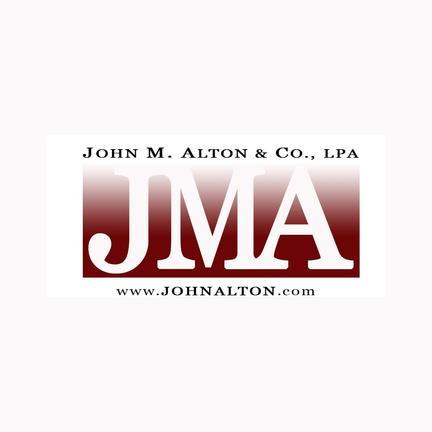















Columbus Bar Association 230 West St., Suite 100 Columbus, OH 43215 (614) 221-4112 www.cbalaw.org NOTICE: Statements or opinions expressed herein are those of the authors and do not necessarily reflect those of the Columbus Bar Association, its officers, board, or staff. Any statements pertaining to the law contained in this magazine are intended solely to provide broad, general information, not legal advice. Readers should seek advice from a licensed attorney with regard to any specific legal issues. Advertising Burgie MediaFusion (614) 554-6294 leslie@burgiemediafusion.com CBA Leadership 6 Embracing the Power of In-Person Networking Christopher S. Vonau Points of Practice 17 What’s Driving the Rise of Complex Litigation Cases in Ohio and Franklin County? Samuel Pipino 21 The Future of Law: AI Disruption and the Emergence of Legal Centaurs Kwame Christian 34 FLSA Rule Change Provides New Test for Employee vs. Independent Contractor Status Jeffrey Stankunas 25 Make Time with AI Dawn Hays Bar Happenings 10 Practice Groups and Professional Networks, CLEs, and Events Life Outside the Law 41 Looking Ahead Jill Snitcher 45 Lawyers with Artistic License: Thomas W. Hill Heather G. Sowald 53 Chevron Deference: Where Do We Go from Here? David C. Tryon Spring’24 Administrative Law 49 TWISM Enterprises: Ohio’s Landmark Decision on Administrative Deference Larry H. James & Christopher R. Green 75 Chevron Deference and Its Uncertain Future in State and Federal Courts Aaron Johnston & Christopher Bagi Review of Thomas W. Merrill’s The Chevron Doctrine: Its Rise and Fall, and the Future of the Administrative State Janyce Katz 81 The Evolution of Administrative Hearings in Ohio Melinda Ryans Snyder 87 Electronic Signature Protocol for Notaries and Design Professionals Luther L. Liggett, Jr.
Columbus Bar Association Editorial Board
Members
/ Production
2024 TABLE OF CONTENTS SPRING
Chair Caitlyn Johnson Board
Joshua Cartee Janyce Katz Tami Kamin Meyer Garth Robotham Melanie Tobias Doug Vonderhaar Editor Lexi Foster Design
Lexi Foster
New Members

WELCOME to the COLUMBUS BAR!
Alexandria Myers
Alexis Hutta
Aren Olson
Ashton Marr
Austin Slayton
Carrie Mayer
Catherine Bell
Charlotte Gross
Cheryl Nester
Christopher Bagi
Chynna Kelley
Colleen Rosshirt
Daniel Carducci
David Bauman
Elizabeth Miller
Evan Hoffman
Faustino Paulo
Felix Yeboah
Hannah Sylvester
Harry Penate
Holly Gross
Jefferson Kiser
Jennifer Otis
Jessica Wood
Jordan Barnard
Kathryn Royal
Keely Daniels
Kelly Wahlers
Kelsey Gleason
Kenneth Nolan
Kirsten Fraser
Laura Peterman
Linda Van Tine
Logan Kaim
Lucas Fykes
Madeline Mischler
Makda Gebremichael
Margaret Tierney
Melinda Snyder
Meredith Schwager
Michael Kraig
Michael Snyder
Michael Truman
Miranda Anandappa
Moyo Mitchell
Nathan Wheatley
Reilly Tate
Robert Hetzel
Roger Gilcrest
Samantha Benjamin
Scott Mackenzie
Scott Sheets
Stacey Gilbert
Taylor Ewashinka
Thelma Price
Tianan Yang
Zac Lackey
Zharia Hargrove

EMBRACING THE POWER OF IN-PERSON NETWORKING
By Christopher S. Vonau
Iface networking events may seem diminished. However, thevalueofin-personcannot
be overstated, especially in the legal profession. The Columbus Bar Association stands as a beacon for attorneys seeking to expand their networks, enhance their skills, and fostermeaningfulrelationshipswithin thelegalcommunity.Thisarticledives into the importance of in-person networking and explores how the ColumbusBarAssociationservesasa vital catalyst for professional growth anddevelopment.

TheHumanElement inNetworking
In an era where LinkedIn messages andemailintroductionsabound,the human element in networking can often be overlooked. However, nothingcantrulyreplacetheimpact offace-to-faceinteractions.
TheCBAunderstandstheimportance of fostering genuine connections amonglegalprofessionals.Throughits diversearrayofin-personevents,the CBA provides attorneys with opportunitiestomeet,converse,and collaborate in person. These events serve as invaluable platforms for attorneys to learn, showcase their expertise,exchangeideas,andforge meaningful connections with colleaguesandpotentialclientsalike.
CBA Leadership Columbus Bar Lawyers Quarterly | Spring 2024 6 |
Buildinga Stronger Community
Networkingisn'tjustaboutadvancing one's career; it's also about contributingtoandstrengtheningthe professional community as a whole. By engaging in face-to-face interactions,attorneyscancultivatea sense of camaraderie and mutual support.TheCBAplaysapivotalrolein nurturingthissenseofcommunityby bringing together legal professionals from diverse backgrounds and practiceareas.

Through its networking events, the CBA facilitates an atmosphere of knowledge sharing, mentorship opportunities, and collaborative endeavors among its members. Whether it's a seasoned attorney offering guidance to a young associateoragroupofpractitioners brainstorming solutions to common challenges, these interactions contribute to the collective growth andresilienceofourlegalcommunity.

Enhancing Professional Development
In-person networking goes beyond casualconversationsandsocializing.It alsoservesasapowerfulvehiclefor professional development. The CBA recognizes that continuous learning and skill enhancement are essential forlegalpractitionerstothriveinan ever-evolvinglandscape.Assuch,the CBAorganizesavarietyofeducational events and workshops designed to sharpen attorneys' skills and expand theirknowledgebase.
From CLE offerings and Practice Group Meetings (formerly known as Committee Meetings) to leadership development programs, like the Barrister Leadership Program, the CBA offers a wealth of resources to helpattorneysstayabreastofindustry developments and cultivate their expertise. Moreover, the connections forgedthroughin-personnetworking often leads to valuable opportunities for career advancement, client referrals, and collaboration on complexcasesorprojects.
Columbus Bar Lawyers Quarterly | Spring 2024 7 |

Overcomingthe ChallengesofVirtual Networking
Whilevirtualnetworkinghasbecome more prevalent in recent years, it cannotfullyreplicatethebenefitsof face-to-face interactions. The CBA recognizes this and continues to prioritize in-person networking opportunitiesdespitetheriseofdigital communication platforms. By fostering genuine connections in a physical setting, the CBA helps attorneysovercomethelimitationsof virtual networking and reap the full benefitsofinterpersonalengagement.
Moreover, in-person networking allowsattorneystobreakfreefromthe constraintsofscreensandkeyboards, enabling them to engage more authentically and meaningfully with theirpeers.Thespontaneityofface-toface interactions fosters creativity, collaboration, and serendipitous connectionsthatareoftenelusivein virtualsettings.
Conclusion
In an age where virtual communication reigns supreme, the valueofin-personnetworkingcannot be overstated within the legal profession. The Columbus Bar Associationprovidesopportunitiesfor attorneys seeking to harness the power of face-to-face interactions to expandtheirnetworks,enhancetheir skills, and foster meaningful relationships within the legal community. By providing diverse networkingopportunities,fosteringa senseofcommunity,andprioritizing professional development, the CBA plays a vital role in shaping the success and resilience of our membersandbeyond.Embracingthe powerofin-personnetworkingisnot justaboutadvancingone'scareer.It's about building a stronger, more connected legal community for the benefitofall.

cvonau@deckervonau.com
Christopher S. Vonau, Esq. Decker Vonau & Carr LLC
Columbus Bar Lawyers Quarterly | Spring 2024 8 |



Write for CBA Publications! Members interested in writing should email publications@cbalaw.org for more information.
Bar Happenings
APRIL & MAY
Practice Groups & Professional Development Network Meetings
REAL PROPERTY - 1ST MONDAY
ESTATE PLANNING - 1ST TUESDAY
COMMON PLEAS - 1ST THURSDAY
FAMILY LAW - 2ND MONDAY
LEGAL RESEARCH - 2ND TUESDAY
PROBATE LAW - 2ND TUESDAY
ENERGY/ENVIRONMENTAL - 2ND WEDNESDAY
SMALL/SOLO - 2ND WEDNESDAY
BANKRUPTCY LAW - 2ND THURSDAY
CONSTRUCTION LAW - 2ND FRIDAY
INTELLECTUAL PROPERTY - 3RD MONDAY
JUVENILE LAW - 3RD TUESDAY
SSD/WC - 3RD WEDNESDAY
FEDERAL COURT - 3RD THURSDAY
GOVERNMENT AGENCIES - 3RD FRIDAY
HEALTHCARE LAW - 4TH MONDAY
LGBTQ+ - 4TH TUESDAY
MUNICIPAL COURT - 4TH WEDNESDAY
YOUNG LAWYERS - 4TH WEDNESDAY
CRIMINAL LAW - 4TH THURSDAY
LABOR AND EMPLOYMENT - 4TH FRIDAY


MEMBER BENEFITS FASTCASE
PRACTICE
CENTER
RESOURCE HUB CLE EASY PASS INSURANCE THIS IS A HIGHLIGHT OF JUST SOME OF THE PERKS OF MEMBERSHIP Why Join? FREE to members, stay in the know regarding your practice area. FREE to members, access material to help your practice! Members receive a discount! Get help navigating life as a caregiver. Get CLE at a HUGE discount and in a format that meets your needs! Get access to affordable group health insurance as well as lawyers professional liability insurance and probate bonds through CBS Agency, Inc. Save hundreds by getting FREE access to FastCase. cbalaw.org/For-Members/Join-the-Columbus-Bar-Association
GROUPS/NETWORKS
MANAGEMENT
SENIORS

Providing 400+ hours of CLE programming annually, the CBA offers the most convenient, cost-effective, relevant source of continuing legal education in central Ohio.
April 10 – 130pm-230pm – An Employer's Duty: Reporting Unclaimed Funds
April 18 – 1pm-2pm – Employers and Unclaimed Funds: Details of ORC 169.03
April and May CLE opportunities
May 2 – 9am-4:30pm – Bankruptcy Law Institute
May 2 – 12pm-2:30pm – IOLTA and Unclaimed Funds: What is TR 88?
May 16 – 1pm-2pm – The Relationship Between Municipal Zoning and Real Property Valuation and Transfers
EXPAND
C ULOC M BUSBARASSOCIATIONCLE
YOUR EXPERTISE
More CLE opportunities https://www.cbalaw.org/Education/CLE


EVENTS YOUR FASTEST UPDATE ABOUT EVENTS YOURCONNECTIONFOREVENTSPACERENTALS WWW.CBALAW.ORG RECEPTIONIST@CBALAW.ORG





CWHAT’S DRIVING THE RISE OF COMPLEX LITIGATION CASES IN OHIO AND FRANKLIN COUNTY?
By Samuel Pipino
omplex litigation filings in Ohio experienced a significant jump in 2023, risingnearly75%fromtheprioryear.Thenumberofstatewidefilings,87,is thelargestsince2014.
The epicenter of the complex litigation earthquake, at least last year, was Franklin County.Thestate’smostpopulouscountywashometo20complexlitigationfilingsin 2023afterhavingzerothepreviousyear.
NotonlydidFranklinCountyoutpacealloftheother87counties,butitwasthefirst time the county led the pack dating back to 1997 – the first year for which data is availableontheStateCourtofCommonPleaswebsite.
What’sdrivingcomplexlitigationfilingssuddenlyupwardaftertheyhoveredaroundthe 40-to-50-per-yearmarkstartingin2019?
Columbus Bar Lawyers Quarterly | Spring 2024 17 |
Points of Practice
OnelikelycontributoristhewaningofCOVID-19.Aswe moveawayfromthepandemic,courtshavebecome fully functioning again and, not surprisingly, more litigation is being filed. The pandemic was all about hunkeringdown;theaftermathisaboutpeoplegetting backtotheirnormallives,businessesandtheeconomy revving up, and lawyers more actively litigating on behalfoftheirclients.
The general rule is that when money is more freely available, litigation is more active. That is clearly reflectedinthesoaringcomplexlitigationfilingsacross theBuckeyeStatelastyearbutalsobackin2014and theyearsimmediatelyfollowingtheGreatRecession.

Theadvantagesofcomplexlitigationcases,ifyoucanevencallitthat,alsomaybe contributingtotheincreasedfilings.Adeterminationthatalawsuitwillbeclassifiedas complexlitigation–whichcanberequestedbytheattorneysordesignatedbyajudge withinsixmonthsofafiling–automaticallyincreasesthetimetodisposeofthematter fromtwotothreeyears.Biggercases,theargumentgoes,needmoretime.
Columbus Bar Lawyers Quarterly | Spring 2024 18 |
Asthosewho’vebeeninvolvedincomplexlitigationcasesknow, there are seven considerations in determining the status. As statedinOhioRuleofSuperintendenceonComplexCases,they includethenumberofpartiesinvolved;whetheraclassactionis involved;whetherit’saproductsliabilitycase;whetherthereare otherrelatedcasesinvolvingunusualmultiplicityorcomplexityof factualorlegalissues;theextentofdiscoverynecessarytoprepare the case for trial; the number or availability of parties and witnessesfortrial;andanyendorsementoforobjectionstothe requestfromanopposingpartyorcounselforanopposingparty.
The state’s data on complex litigation filings reveals other interesting tidbits. For example, Monroe County — Ohio’s second-least populous county — has seen a huge uptick in complexlitigationcasesinrecentyears.Thetinycountyledthe statein2022and2021bygeneratinglotsoflitigation—likelydue to the county’s large number of oil and gas leases and landowners with subsurface rights that were leased, sold and/ordiscovered.
Before Monroe County, it was Lucas County’s turn to be ground zero for complex litigationcases.LucasCounty,thehomeofToledo,hadthemostfilingsinsevenofthe10 yearsduringthe2010s.
Whileit’sunclearwhatcontributedtothelargenumberofLucasCountyfilings,one factorcouldbeatplaythereandelsewhere:champerty.Champertyisanancientlegal doctrineinwhichoutsidethirdpartiesfinancelitigationinhopesofgettingareturnon theirinvestment.
Severalstatesprohibitthispractice,while16permititexplicitlythroughstatuteand anotherdozenorsoimplicitly,accordingtotheLegalInformationInstitute.WhileOhio haspermittedchampertybystatutesince2008,itcomeswithseveralrequirementsfor whatarenowcallednon-recoursefunders.Thelawrequireslitigationfunderstoregister withthestate,promisenottointerferewithorinfluencethelitigation,clearlydisclose theirannualizedinterestrate,andpermitclientstocancelthearrangementswithinfive daysofsigning.
Thebottomlineisthatchamperty,ornonrecourse funding, is ripe for use in complex litigation cases and could be fueling the recent uptick in filings. We’ll takealookagainearlynextyeartoseeif thetrendcontinues.
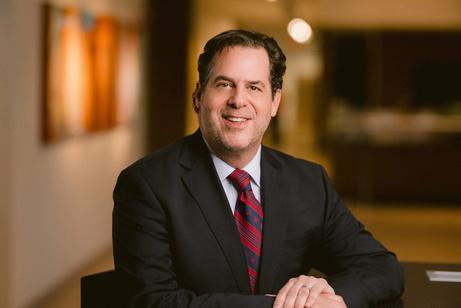
Samuel Pipino
Isaac Wiles
spipino@isaacwiles.com
Columbus Bar Lawyers Quarterly | Spring 2024 19 |

The Future of Law: AI Disruption
Emergence and the
of Legal Centaurs
By Kwame Christian
A storm is brewing in the legal profession; a technological tempest poweredbyArtificialIntelligence(AI).
AI refers to computer systems designed to mimic human intelligenceandperformtaskssuchas recognizing speech, learning, planning,andproblem-solving.Butin recentyears,we’veseentheadventof anewtypeofAIcalledgenerativeAI, capable of creating new content, whetherthatbeapieceofwriting,an image,orevenapieceofmusic.
Oneofthemostprominentexamples ofgenerativeAIisOpenAI’slanguage model, GPT (short for Generative PretrainedTransformer).
A recent iteration, known as GPT-3.5, displayedpromisingpotential,butit’s thelatestversion,GPT-4,thathassent shockwaves through industries, especiallylaw. Now that we’ve set the stage, let’s explore what’s brewing in our profession.Inastartlingdevelopment, the GPT-4 AI has grown so powerful that it can outperform law school graduatesinpassingthebarexam.
Columbus Bar Lawyers Quarterly | Spring 2024 21 |
Even more alarming is the speed at which AI is advancing. The most drastic improvements in AI have occurred not over years, but mere months.Thequestionthenbecomes,
“What will AI be capable of in a few years?”
The Rise of Legal Centaurs
In a 2023 Stanford Law study [1], researchers found that while GPT-3.5 languished in the bottom 10th percentile on the bar exam, its successor, GPT-4, passed with scores approaching the 90th percentile. With such exponential advancement, the threat AI poses to traditional legal practicebecomesclear.
Before despair sets in, let’s view this scenariothroughanotherlens.When IBM’s Deep Blue defeated chess grandmasterGarryKasparovin1997,it seemed as though AI had the upper hand.Yet,today,themostformidable chessentityisneitherahumannora computer, but the two working in tandem. Termed centaurs, these teams of humans and AI are revolutionizing chess by combining human creativity and strategic thinking with AI’s brute force of computationalpower.
In the legal profession, centaurs are notonlythefuture,buttheyarealso the present. The best lawyers of tomorrow will openly embrace AI to augment their work, becoming legal centaurs in the process. Their expertise will guide and review the workofAI,ensuringtheaccuracyand validityofthelegaltasksAIperforms.
As AI continues to evolve, the technical abilities of a lawyer are at risk of becoming commoditized. But no AI, no matter how advanced, can replace the empathy, interpersonal skills, and creative thinking of a human being. This is where our anthropocentric bias, our innate human inclination to relate to and trustotherhumans,worksinourfavor.
Columbus Bar Lawyers Quarterly | Spring 2024 22 |
Despite the impersonal efficiency AI brings, clients will still seek the comfort and security of interacting with a human lawyer who genuinely caresaboutthem.
AI will undoubtedly change how we approach our work, from research to writing to counseling clients. Therefore,it’sessentialtodiscusshow we can ensure the responsible and ethicaluseofthesenewtools.
One such ethical challenge revolves around billing practices. If AI can produce high-quality legal work in a fraction of the time and at a significantly lower cost, how should webillourclients?Shouldthebillable hourremainthestandard?Theseare questions the profession must tackle aswenavigatethisnewlandscape.
Human Skills: The Last Bastion
Theprofession’sfutureliesininvesting inhuman-centricskills.Astechnology advances, the key differentiator between lawyers will not be their technical skills but their ability to communicate, empathize, and build relationships with their clients. They will need to ask the right questions, guidetheAItoperformoptimallyand bringhumanjudgmentandethicsto thetable.
Speaking of ethics, the legal professionmustinitiateconversations around the ethical considerations of usingAIinthepracticeoflaw.
Let us face the future with a clear understanding: AI will not replace lawyers but will undoubtedly change thewaywepracticelaw.Thelawfirms that can skillfully integrate AI into their strategy in a way that is profitable,efficient,andethicalwillbe theonesthatemergevictoriousinthis newera.

Kwame Christian Carlile Patchen & Murphy LLP kchristian@cpmlaw.com
[1]PabloArrendondo,GPT-4PassestheBarExam: WhatThatMeansforArtificialIntelligenceToolsin the Legal Profession (April 19, 2023), https://law.stanford.edu/2023/04/19/gpt-4-passesthe-bar-exam-what-that-means-for-artificialintelligence-tools-in-the-legalindustry/#:~:text=We%20found%20that%20while%2 0GPT,any%20fine%2Dtuning%20for%20law
Columbus Bar Lawyers Quarterly | Spring 2024 23 |
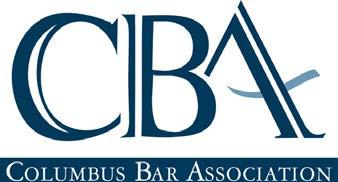

The Columbus Bar Association is a trusted resource for connecting lawyers to clients. Make your legal practice searchable!
Attorneys: Be searchable by practice areas, languages, admissions.
Law Firms:
Advertise your law firm and link to attorney profiles.
www.cbalaw.org/Directory/Advertise Directory
Make Time with AI
By Dawn Hays

As the CBA begins to leverage AI and technology to better support you, we share our experience in the hopes it helps you betterserveyourclients andourcommunity.
Columbus Bar Lawyers Quarterly | Spring 2024 25 |
I procrastinated on writing this article about AI. Not because it’s about AI or because I hate writing–IprocrastinatedbecauseIoftenrelyon theshotofenergythatcomesfromdoingthings atthelastminute. Doingsomethingsunderthe gunfocusesmyattention. Butstaringatablank screen for hours awaiting divine inspiration to get the writing rolling is a luxury I don’t have when I indulge my inner procrastinator. And that’soneofthewaysIuseAI.

IusedChatGPTtofilltheblankscreenIwasjust looking at when I sat down to write this article. I’m overwriting almost everything ChatGPT created, but it’s an effective tool to help me get off the starting block. If you’re interested in readingwhatChatGPTwrotewhenIpromptedit to “[d]raft an educational and pithy article withoutalotoffillerwordstoeducateattorneys on how ai can be used to drive efficiency in workflows and kickstart the creative process,” clickhere. ChatGPTisn’tfunnyorpithyyet.
Columbus Bar Lawyers Quarterly | Spring 2024 26 |
Another way I’ve used AI is to create slide decks to use during speaking engagements.
Throughcarefullywordedprompts,Igenerate asummaryofwhatI’mgoingtosaytheninput the summary into a slide creator plug-in that preparesaslidedeckthatiswaymorevisually appealing than what I would have created. Withthattaskcomplete,I’mabletoinvestmy time focusing on making the delivery more compelling, and time is something all attorneyscanusemoreofandappreciate.

The legal community has a well-deserved, albeit logical, reputation for being late adopters of technology. We are risk averse, and there are plenty of cautionary tales about using ChatGPT to draft legal arguments. Without limits, it’s not only ill-advised but can also be unethical. But there are numerous ways (and the list grows each hour) AI can be used to enhance our days and streamline business,includingthebusinessoflaw.
Columbus Bar Lawyers Quarterly | Spring 2024 27 |
Here’sasimpleandrelatableexample. Weall know that communication in business is key. Butwecanmissmessageswheneverythingis happeningeverywhereallatonce(think:calls, text,VM,IM,EM,messenger,chat,etc.). AIcan helpmanagesomeofthatchaos. Infact,Ijust asked ChatGPT to list ways to effectively ebb the incessant flow of emails we receive every day. Here’swhatitsuggested:
1. Automated Sorting and Prioritization: AI can analyze incoming emails and sort them based on priority, sender, and content, ensuringthaturgentmessagesareaddressed promptly.
2.SmartReplySuggestions: AI can generate suggestedrepliesbasedonthecontextofthe email, saving time and effort in composing responsestoroutinemessages.
Columbus Bar Lawyers Quarterly | Spring 2024 28 |
3. Email Categorization: AI algorithms can categorize emails into different folders or labels, making it easier to manage and locate relevantmessages.
4.SpamFiltering: AI-poweredspamfilterscan accurately identify and divert unwanted emailstothespamfolder,keepingyourinbox clutter-free.
5. Email Summarization: AI can summarize lengthy emails, extracting key points and providingaconciseoverview,allowingusersto quickly grasp the content without reading throughtheentiremessage.
6.EmailScheduling: AIassistantscananalyze recipients'behaviorandsuggestoptimaltimes for sending emails to maximize open and responserates.
7. Attachment Management: AI can detect attachments in emails and suggest relevant actions, such as saving them to a designated folderorsharingthemwithrelevantcontacts.
8. Language Translation: AI-powered translationtoolscantranslateemailswrittenin different languages, facilitating communicationacrosslanguagebarriers.
Columbus Bar Lawyers Quarterly | Spring 2024 29 |
9. Email Insights and Analytics: AI can provide insights into email usage patterns, including response times, email volume, and interactiontrends,helpingusersoptimizetheir emailworkflows.
10.PersonalizedEmailRecommendations: AI algorithmscananalyzeemailcontentanduser behavior to recommend relevant emails, newsletters, or contacts, enhancing personal productivityandefficiency.
ThanksChatGPT.
Now, can you use this list of groceries I currently have in my refrigerator to create a recipe that I can follow to make dinner becauseIdon’thavethebandwidthtothinkof anotherthingtonight? Youcan?
Thanksagain,ChatGPT.
Columbus Bar Lawyers Quarterly | Spring 2024 30 |
Learning how to leverage AI presents knowledge workers with the rare opportunity to live within the intersection of science, art and innovation while outsourcing the mundane–ahappyplaceformanyofus. And, from everything we’re reading to the conversations we’re having, the legal community could use more time in a happyplace.

Thebusinessofbarassociations,justlikethe practice of law, has changed. The CBA is continuously exploring opportunities to leverageAIandtechnologytodriveefficiency, improve communication and increase databased decision-making to better serve all of youandsupportourentirecommunity. We allknowthatbusinessesmustevolvetoadapt to these dynamic conditions and meet the ever-changing needs of different stakeholders. It’salot,anditainteasy. But ignoring or resisting AI prior to investigation will make your business less adaptive and ultimatelylesscompetitive.
Columbus Bar Lawyers Quarterly | Spring 2024 31 |
AI is a transformative tool that can help all of us successfully navigate this post-COVID era more efficiently, effectively, and more comfortablyifweadoptagrowthmindsetand learnmoreaboutit.Ifyouwanttoknowmore about how to use AI (or tech in general) to make work more efficient and enriching, messageme


Columbus Bar Lawyers Quarterly | Spring 2024 32 |
Dawn Hays Columbus Bar Association dawn@cbalaw.org

FLSA RULE CHANGE
Provides New Test for Employee vs. Independent Contractor Status
By Jeffrey Stankunas
Employers already must deal with the most draconian and punitive employment statute of all — the Fair Labor Standards Act. The penalties for violating FLSA are steep, the statute of limitations is long, and owners and officers can be sued individually in addition to their companies. Violations also can lead to collective actions, which are similar to class action lawsuits. And settlements must be approved by a court of the UnitedStatesDepartmentofLabor.

The result: A cottage industry of lawyers who do nothing but FLSAworkandafederalcivildocketdominatedbyFLSAsuits.
Columbus Bar Lawyers Quarterly | Spring 2024 34 |
Assuch,employersneedtokeepacloseeyeonanychangesto FLSA regulations, such as the one that goes into effect on March 11 regarding classification of independent contractors. While not a seismic change in the rules, not adhering to it could leave employers on the hook for uncompensated overtimeand/orminimumwageviolations.

The new rule is meant to encourage employers to take individuals who were previously considered independent contractors and instead classify them as employees who are eligible for overtime. Misclassification, the DOL argues, is “a serious problem that impacts workers’ rights to minimum wage and overtime pay, facilitates wage theft, allows some employers to undercut their law-abiding competition and hurtstheeconomyat-large.”
Columbus Bar Lawyers Quarterly | Spring 2024 35 |
Determining whether a worker is an employee or independent contractor has long been confusing to many companies. Some mistakenly believe that because they send a 1099 form to a worker, this automatically classifies them as an independent contractor. Many also are under the impressionthatworkerssuppliedbystaffingfirmsarealways independent contractors – but this may not always be the caseundertherevisedFLSArules.

It’s not uncommon to see employers give independent contract workers their own offices and nameplates, make them sign an agreement to adhere to the employee manual, place them on the website and phone roster, and invite them to the company Christmas party, but treat them like independent contractors with no tax and Social Security withholdingandatlesspaythanhourlyemployees.
Columbus Bar Lawyers Quarterly | Spring 2024 36 |
In a stated effort to better guide companies, the DOL has rescinded the 2021 Independent Contractor Rule and replaced it with a six-factor test for analyzing and determining the statusofanemployeevs.anindependentcontractor.
Thesefactorsareasfollows:
1. Opportunity for profit or loss depending on managerial skill. This means, among other things, that some decisions by a worker that affect the amount of pay they receive, like the decision to work more hours when paid a fixed rate per hour, generally don’t indicateanindependentcontractorstatus.
2. Investments by the worker and the potentialemployer, that means a focus should be on comparing the investments to determine whether the worker is making similar types of investments as the potential employer (even on a smaller scale), which if so suggests the worker is operatingindependently.
3. Degree of permanence of the work relationship means that if it is definite in duration, non-exclusive, or project based, then the work relationship is indicative of independentcontractorstatus.
Columbus Bar Lawyers Quarterly | Spring 2024 37 |
4. Nature and degree of control considers facts such as whether the potential employer exercises control over the worker’s schedule, supervises the performanceofthework,orexplicitlylimits theworker’sabilitytoworkforothers.
5. The extent to which the work performed is an integral part of the potential employer’s business. If the work the individual performs is not critical, necessary, or central to the employer’s principal business, then this factor weighs in favor of the worker being an independentcontractor.
6.Skillandinitiative, means that if the worker brings specialized skills to the work relationship, particularly if the workers is not dependent on training from the potential employer to perform the work, then this factor weighs in favor of an independentcontractorrelationship.
The key difference between the new rule and the nowrescinded 2021 rule, according to DOL, is a return to “a totalityof-the-circumstances economic reality test, where no single factor or group of factors is assigned any predetermined weight.”ItalsoreturnstoDOL’s“longstandingconsiderationof
Columbus Bar Lawyers Quarterly | Spring 2024 38 |
whethertheworkisintegraltotheemployer’sbusiness(rather thanwhetheritisexclusivelypartofan‘integratedunitof production’).”

Therulechangeislikelytohaveanoversizedimpactongig workerswhoarehiredbyusingapp-basedjobplatforms. Companieswhoobtainlaborbywayofstaffingagenciesmay belessaffected,particularlyifthestaffingagencyispayingthe workeratleastminimumwageandanovertimerateoftime andahalfofthehourlyrateofpay.However,Ihaveseenat leastonecompanywhodiscontinuedtheirrelationshipwitha staffingcompany.
Thisisallthemorereasonemployersshouldpayattentionto theMarchruleschange–andbeginpreparingforitnow.

Jeffrey Stankunas
Isaac Wiles
jstankunas@isaacwiles.com
Columbus Bar Lawyers Quarterly | Spring 2024 39 |
WELLNESS PROFESSIONAL DEVELOPMENT NETWORK!


The Wellness Professional Development Network is available to all attorneys at the Columbus Bar.
This community of individuals is focused on helping Bar members discover how to center wellness as a part of their success in the legal profession.
This is a space for attorneys to destress and practice positive coping skills.
Whether you are a law student, a seasoned attorney, or somewhere in between, all CBA members are welcome to join!
Questions? Email Leslie Barr at leslie@cbalaw.org.
cbalaw.org/Practice-Groups-Networks/Professional-Development-Networks/Wellness-Professional-Development-Network
Chair
Claire Halffield
By Jill Snitcher

Asafitnessjunkie,Ioftenreflectonhowmyfitnessexperiences are a metaphor for my work experiences (and vice versa). Recently, I was taking my morning walk, and it was still dark after a heavy rain. My headlamp showed a muddy mess far ahead, and I became fixated on navigating a route to avoid slippingandfalling. Justthen,Itrippedoverarockrightinfront ofme.Noharm,butitgotmymindworking.
Columbus Bar Lawyers Quarterly | Spring 2024 41 |
Life Outside the Law
ItseemsIwaslookingsofaraheadthatIdidn’tseetheobstacle right in front of me. Isn’t that a common metaphor for the experiences we often face in our work: sometimes we get so fixatedonwherewearegoingthatwemisswhat’srightinfront ofus.Weneedtoremindourselvestotakethingsonestepata time.Theabilitytodissectchallengesintobite-sizedchunkscan makeanotherwiseominousfeateasytoovercome.
Butintoday’sworld,thatisbecomingincreasinglydifficult. I recentlyhadaconversationwithalawyerwhodescribedtome the daily demands of clients for immediate response. While technology has indeed provided many benefits, it has also created a much more competitive environment – one where thereisatacitexpectationofimmediaterepliesnomatterthe hour. Thissenseofurgencyhasreducedourabilitytostopand think;ithasdiminishedourcreativeproblem-solvingabilities.
Columbus Bar Lawyers Quarterly | Spring 2024 42 |
Lawyersareproblemsolvers. Insomecases,theproblemhas alreadyoccurred,andwearetryingtominimizethedamage;in other cases, we are trying to avoid a problem altogether. In eitherscenario,weareanxioustomeetclientexpectations. We can be so focused on the end result that we lose sight of creative problem-solving or there is simply no time to break thingsdownintothoughtful,bite-sizedactions. Theneteffectis an erosion of our sense of purpose and the satisfaction that comeswithajobwelldone.
ThebarassociationrecentlycreatedaWellnessNetworktogive our members opportunities to explore these concepts and refuel. Recognizingthatwellnessmeanssomethingdifferentto everyone, we are looking to better understand what our memberswant. Forme,wellnessismakingtimetoexercise,be innatureandfuelmybodywithgoodnutrition. Foryou,itmay be something completely different – maybe its learning strategiestounplugorfindingactivitiesthatnurtureyoursense ofpurpose. Whateveritisforyou,yourpointofviewmatters andwewanttohearitbecauseyoubelongattheCBA.Helpus createbetterlawyersforabettercommunity.

Jill Snitcher
Columbus Bar Association
jill@cbalaw.org
Columbus Bar Lawyers Quarterly | Spring 2024 43 |




Now nearing retirement, Tom Hill enjoys working through classical piano pieces,keepingphysically fit, and spending time withhisfamily.
Tom grew up in Canton, Illinois, pop. 12,000, the son of a shoe-repairman with very little formal education. Tom’smother, a high school graduate, operated a small loan business. Tom was their only child. Tom’s father had a beautiful baritone singing voice. In 1933, he wasinvitedtoauditionfor
LAWYERS WITH ARTISTIC LICENSE: Thomas W. Hill
By Heather G. Sowald
theMetropolitanOperain NYC, which he did in February 1934. Tom’s dad also served two terms in the Illinois state legislatureinthe1950s.
Tombeganpianolessons at age 7 and took to it eagerly. He also played varsity football and basketball both in high school and at Grinnell College, while continuing his classical piano training. He gave his first senior piano recital just before his college graduationin1967.
He wasn’t to resume classical lessons until 41 yearslater.
Tommethiswife,Laurie, during his first week at Grinnell. Nowmarriedfor 56years,theyhaveason, Adam, a daughter, Julie, and seven grandchildren. Laurie has been Tom’s guiding light, constant supporter, and cheerleader. Lauriewasa high school teacher inducted upon her retirement into the Dublin Coffman High SchoolHallofFame.
Columbus Bar Lawyers Quarterly | Spring 2024 45 |

WhileattheCornellLawSchool (J.D.1970),Tomwasrecruitedby the firm now known as Kegler, Brown,Hill,andRitter. Tomisa highly respected litigator who has also proudly served on the board, and as president of, the ColumbusBarFoundation.
InDecember2011,Lauriefounda magnificent Steinway Model B grandpianoforsale. Itwasbuilt in1893. Tomtriedit,lovedit,and they bought it. On the drive home after buying it, Tom told Laurie, “You have just created a monster. I am going to give a classicalpianorecitalintwo
years. You will get tired of hearingmepractice.”Tomhired a superb classical pianist and teacher and began practicing each morning after his daily workout and before work. He laughingly says that Laurie was quite tolerant of his practicing, often escaping the endless annoying repetition with noisecanceling headphones — a gift fromtheirgrandkids.
Tom’s “second” senior recital occurredonNovember2,2013,at theJeanneMcCoyCenterinNew Albany, with a large supportive audienceoffriendsandfamily.
Columbus Bar Lawyers Quarterly | Spring 2024 46 |

Laurie took the stage to introduce him. Tom then previewedeachselectionandits history before playing seven classical pieces. Years later he decided to have a third “senior” recital,againgivinghimselfa 2-year deadline. That third, and last, recital occurred on October 22, 2022. Tom is currently workingthroughaRachmaninoff and a Brahms piece, just for his own pleasure and to play for friendsathishome.

Tom looks forward to further travel, to staying healthy and strong through exercise, and to future classical piano performances on his beloved Steinway, surrounded by friends andfamily.

Sowald Sowald Anderson Hawley & Johnson hsowald@sowaldlaw.com
Columbus Bar Lawyers Quarterly | Spring 2024 47 |
Heather G. Sowald, Esq.
FREEPORTRAIT!
COLUMBUS BAR ASSOCIATION

Reach clients with digital media
CBA Media Services are available to assist lawyers with professional photography (including a FREE portrait for CBA members every 2 years) plus video and audio production. Discounted pricing and special packages for CBA members.
PHOTOGRAPHY
CBA MEMBERS
Free 30-minute photo session and professional digital portrait
NON-MEMBERS
$200 for portrait
ALSO AVALIABLE
Event coverage



VIDEOGRAPHY AUDIO
VIDEO SERVICES:
Bring your message to life! We have years of experience producing digital video, from small social media posts to full blown multi-camera live production. Discount for members.
AUDIO SERVICES: Voice overs Spot tags Podcast production Transcription Discounted rate for CBA members.
CONTACTUS Kelley Marchal kelley@cbalaw.org (614) 340-2044

TWISM ENTERPRISES: OHIO’S LANDMARK
DECISION ON ADMINISTRATIVE DEFERENCE
By Larry H. James and Christopher R. Green
Ohio state courts are no longer obligated to defer to administrative agencies’ interpretations of ambiguous statutes. On December 29, 2022, the Ohio Supreme Court ruled in TWISM Ents., L.L.C. v. State Bd. of Registration for Professional Engineers & Surveyors, 172 Ohio St.3d 225, 2022-Ohio-4677, that “it is the role of the judiciary, not administrativeagencies,tomaketheultimatedeterminationaboutwhatthelawmeans.”
While many states continue to apply Chevron deference, following the U.S. Supreme Court’sdecisionin Chevron,U.S.A.,Inc.v.Natl.ResourcesDefenseCouncil,Inc.,467U.S.837 (1984),Ohiocourtsarenolongerboundtodefertoanagency’sinterpretationofthelaw.
Spring ‘24 Issue: Administrative Law Columbus Bar Lawyers Quarterly | Spring 2024 49 |
The TWISM case centered on the licensing of an engineering firm. TWISM Enterprises, the appellant, contested the agency’s interpretation of a statute outlining requirements for providing engineering services in Ohio. The statute mandates engineering firms to designate full-time partners, managers, members, officers, or directors as being in “responsible charge” of its engineering activities. TWISM Enterprises designated an independent contractor instead of a full-time W-2 employee as its designated manager. The Ohio Board of Registration for Professional Engineers and Surveyors, the appellee, argued that the statute necessitates the designation of an employee ofthefirm,notanindependentcontractor.
During administrative appeal, the Hamilton County Court of Common Pleas conducted a de novo review and sided with TWISM Enterprises’ interpretation of the statute, declining to defer to the agency. However, the Court of Appeals for the First District reversed this decision, citing Chevron and stating that the statute was ambiguous, thereby requiring deference to the agency’s interpretation.TheOhioSupremeCourtacceptedtheappealontwopropositions oflaw,includingtheappropriateapproachtoadministrativedeference.
In its ruling, the Ohio Supreme Court adopted permissive deference allowing consideration of an agency’s interpretation of an ambiguous statute but not mandatingadherencetoit.JusticeDeWineemphasized,“Theideathatacourt must defer to an agency determination is difficult to reconcile with these separation-of-powers concepts. When a court defers to an agency’s interpretationofthelaw,ithandstotheexecutivebranchthejudicialauthority ‘to say what the law is.’” TWISM at ¶ 34, quoting State v. Parker, 157 Ohio St.3d 460, 2019-Ohio-3848, 137 N.E.3d 1151, ¶ 31. The Court clarified that lower courts shouldinterpretstatutesadministeredbystateagenciesasfollows:
1.Itisnevermandatoryforacourttodefertotheinterpretationofanadministrative agency.
2.Acourtmayconsideranadministrativeagency’sinterpretationofalegaltextbut should exercise independent interpretation, with the weight of the agency’s interpretation dependent on its persuasive power and the competency of the agency.Andifthestatuteisunambiguous,thenthecourtshouldstoprightthere.
Columbus Bar Lawyers Quarterly | Spring 2024 50 |
Ultimately, the Supreme Court sided with TWISM Enterprises and held that an independentcontractormayberesponsibleforandinchargeoftheengineering activitiesanddecisionsofthefirm.
The TWISM ruling holds significant implications for disputes between Ohioans and administrative agencies. During administrative appeals, state agencies will have reduced influence over how courts interpret statutes, particularly when the agency is a party to the case. Recent cases, such as one involving the interpretation of a local zoning code in the Tenth District Court of Appeals, demonstrate the practical implications of the TWISM decision. Prior to TWISM, the court held that “[u]nless interpretation of a local zoning code is clearly in error, a court should defer to the administrative interpretation.” Turner v. City of Bexley Bd. of Zoning & Planning, 10th Dist. Nos. 22AP-554 and 22AP-562, 2023-Ohio-3225, ¶ 26, citing Access Ohio, LLC v. Gahanna, 10th Dist. No. 19AP-64, 2020-Ohio-2908, ¶ 16. Now, pursuant to TWISM, the court cannot exercise the level of deference to the administrative interpretation of the zoning code. Thus, where “the legal text is clear and unambiguous, a court never even considers the administrative interpretation of that text.” Id. at ¶ 27. Even thoughtheTenthDistrictcaseinvolvedordinancesinsteadofstatutes,theconstitutionalrole ofthecourtremainedthesame:tosaywhatthelawis.
Ohio is not alone in departing from agency deference. Several other states, including Arizona, Delaware, Florida, Kansas, Michigan, Mississippi, Utah, Wisconsin, and Wyoming, have also shifted away from deference towards administrative agencies. Some states, such as Arizona, Florida, and Wisconsin, have even approved constitutional amendments or state laws abolishing deferencetoadministrativeagencies.

Larry H. James
Amundsen Davis LLC
ljames@amundsendavislaw.com

Christopher R. Green
Amundsen Davis LLC
cgreen@amundsendavislaw.com
Columbus Bar Lawyers Quarterly | Spring 2024 51 |



CHEVRON DEFERENCE: WHERE DO WE GO FROM HERE?
By David C. Tryon
In Chevron U.S.A., Inc. v. Natural Resources Defense Council,Inc.,[ii] a unanimous U.S.SupremeCourtheldthat lower courts should give executiveregulatoryagencies deference in interpreting ambiguous statutes so long as their interpretations are reasonable. That 1984 decisioncreatedtheso-called “Chevron deference” that gives federal regulators a pronounced legal advantage againstlitigantswhodareto litigateanagency’sauthority or statutory interpretation.
On January 17, the Supreme Court heard oral arguments in Loper Bright v. Raimondo[iii] and Relentless, Inc. v. Department of Commerce,[iv]twocasesthat asktheCourttoreconsider
Chevron. And there are compelling reasons for the Courttodoso.
Chevron deference blurs the lines of constitutionally separated powers. It prejudiciallytipsthescalesof justice in the government’s favor, chilling legal challenges,andinadvertently encouraging Congress to draft ambiguous statutes. Chevron’s “systemic judicial bias”isanoutlierthatcannot be squared with the Federal RulesofEvidence,andifthe Supreme Court should decide to revise or abandon its muddled deference scheme, a fairer judicial review methodology should beat-handtoreplaceit.
Columbus Bar Lawyers Quarterly | Spring 2024 53 |
The Regulatory Danger
When Congress passes a law, the agency charged with executing that law issues regulations — typically in the Code of Federal Regulations — that interpret and explain how the government understands and will enforce the law. The interpretative regulations are often necessary because the laws themselves, either inadvertentlyorbydesign,lackclarity. The Administrative Procedure Act (APA)requiresthatformalregulations go through a “notice and comment” procedurebeforetheybecomelegally binding “rules” that carry the force oflaw.[v]
TheCodeofFederalRegulationsnow spans more than 180,000 pages,[vi] and federal agencies add between “threethousandtofivethousandfinal rules” each year.[vii] In City of Arlington Tex. v. F.C.C., [viii] Chief Justice Roberts observed that the “Framers could hardly have envisioned today’s ‘vast and varied federal bureaucracy’ and the authority administrative agencies now hold over our economic, social, and political activities.” Even more concerning, federal criminal regulations have become all-but impossible to follow. “If regulations enforceable in criminal prosecutions are included, the number of potentiallyrelevantfederallawscould exceed300,000,”[ix]nearlyone
hundredtimesmorethanthe“3,300 congressionally enacted federal criminal statutes.”[x] James Madison, were he alive today, might “describe the result as ‘the very definition of tyranny,’” but at the very least “the dangerposedbythegrowingpower oftheadministrativestatecannotbe dismissed.”[xi]
Chevron Deference: Special Judicial Treatment for Agencies and Why It Matters
Typically,courts“saywhatthelawis” by interpreting statutory text and, perhaps, the perceived intent of the legislature that wrote it. Appellate courts generally review trial court statutory interpretations denovo[xii] with both parties presenting competing interpretations for the court to consider, and neither interpretation is afforded any special weight.Notsoinadministrativelaw.
Since Congress enacted the APA in 1946,courtshavestruggledtodefine how much — if any — judicial deference is owed to agency interpretations of the laws they enforce.In1984,theSupremeCourt’s decisioninChevrongavelowercourts
Columbus Bar Lawyers Quarterly | Spring 2024 54 |
an interpretative tool to use in administrative law when hearing challenges to federal regulations.[xiii]
Chevron directs courts to defer to formal agency interpretations of statutes by using a two-step legal analysis:ascertainingfirstwhetherthe statute is clear or ambiguous; and then, if it is clear, comparing the regulationtothestatutetodetermine iftheagencyhasproperlyinterpreted the statute, or, if the statute is ambiguous, deferring to the agency’s interpretation so long as it is reasonable.[xiv]
Although simple on its face, “[t]he Court has been far from clear as to how the two Chevron steps should operate.”[xv] And over the past 40 years Chevron deference“hasbecome [so]pittedwithexceptionsand caveats...”[xvi]that,
[t]he glaring inconsistencies between the Supreme Court’sapproachto Chevron and the approach (more accurately the approaches) ofthecircuitcourtsraisethe questionwhetheradoctrine can, or should, survive in circuit courts when it bears norelationtotheversionof the doctrine that exists in theSupremeCourt.[xvii]
Nevertheless, those defending Chevron’s specialtreatmentofagency
interpretations generally offer two justificationsforthejudicialdeference:
(1) an administering agency is more likely than a generalist court to determine the best interpretation of a statute because of the agency’s specialized ‘expertise’ in the statute’ssubjectmatter;and (2)byemployingambiguous terms rather than clear, specific language when drafting a statute, Congress ostensibly was deliberately delegating its lawmaking responsibilities to the agency.[xviii]
Otheradvocatesjustify Chevron’s twostep rule based on “agency deliberative rationality, the executive branch’s political responsiveness and accountability, concerns for national regulatory uniformity, or inherent executive power.”[xix] And some — particularly those in Congress — believe judicial deference to agencies
“isvitaltoCongress’sabilitytoprotect Americans through efficient and expertise-based regulation”[xx] because “[t]he modern economy necessitated a modernization of the U.S.regulatoryframework”and“partof thatprojectwasdelegatingclearand broadauthoritytoexecutiveagencies andallowingthoseagenciestoadopt andadaptregulationstorespondto
Columbus Bar Lawyers Quarterly | Spring 2024 55 |
new hazards.”[xxi] According to this “constitutionally problematic”[xxii] view of government, Congress is too busy and ill-equipped to work out statutory details,[xxiii] so administrative agencies, a “fourth branch”ofgovernmentwithunelected “subject-matter experts,” should write thelawinstead.
Affording judicial deference to agencies matters because, in the nearly forty years since the Supreme Court decided Chevron, lower courts havesidedwithagencyinterpretations by an overwhelming margin. Law professor Christopher J. Walker’s scholarly review of “every published circuit court decision that cite[d] Chevron deferencefrom2003to2013” found that agency interpretations of ambiguousstatuteswere“right”93.8% of the time[xxiv] — a remarkable success rate when interpreting statutesthatbydefinitionare“capable of being understood in two or more possible senses or ways.”[xxv] But perhaps agency success is less surprising if Chevron deference is understood to introduce a “systemic judicial bias” in favor of the government.[xxvi] Legal scholar Philip Hamburger has observed that “the biasarisesfrominstitutionalprecedent rather than individual prejudice, but thismakesthebiassystematicandthe Fifth Amendment due process problem especially serious”[xxvii] consideringthatArticleIII“judges
have a duty to exercise independent and unbiased judgment, and . . . are barredattheveryleastfromengaging insystematicbias.”[xxvii]But Chevron deference puts a “judicially manufactured” “heavyweight thumb on the scales” of justice,[xxix] and although “justiceisblind,andknows not of the existence of the sovereign, orofhisrights,untilmademanifestby its own record,”[xxx] she seems to be peeking under her blindfold when federalagenciesstandbeforeher.
This significant legal advantage has had at least two other notable consequences for regulators and the regulated. First, with Chevron deference backstopping agency decisions, agencies can and do regulate more aggressively. Professor Walker’s surveys of agency rule makersandlegislatorsfoundthat federal agencies act differentlywhentheybelieve theyareentitledto Chevron space.Nearlynineintenrule drafters surveyed strongly agreed(46%)oragreed(41%) — and another 11% somewhat agreed — that “[w]hen drafting rules and interpretingstatutes,agency drafters such as yourself think about subsequent judicialreview.”[xxxi]
Andthosesurveyedfurtherunderstood
Columbus Bar Lawyers Quarterly | Spring 2024 56 |
thatnotonlydo“federalagenciesplay a substantial role in drafting statutes that they subsequently administer,”[xxxii] but “a federal agency is more aggressive in its interpretiveeffortsifitisconfidentthat Chevrondeferenceapplies....”[xxxiii]
Second, federal officials across the governmentseemreadyandwillingto sacrificecorrectlegalinterpretationsof statutes and agency rules for regulatory “uniformity.” During oral argumentsbeforetheSupremeCourt in Loper Bright and Relentless, for example, the U.S. Solicitor General defended Chevron deference by stressing the need for uniform regulatory outcomes nationwide. If judges interpret administrative law without giving agencies deference, she warned, different courts may decide similar questions differently, therebycreatingregulatoryconfusion. Her solution, however, was for Article III courts to abdicate their judicial functiontoagencyexperts.Thatopen, prejudicial preference for agency interpretation has a chilling effect on would-be litigants, discouraging challengestoagencyrules.AsJustice Ketanji Brown Jackson recognized during oral argument, “under a Chevron regime . . . you’re going to have parties thinking twice before going down a litigation road with respect to a [statutory] term because they’regoingtosay,attheendofthe day...theagencyhasareasonable
interpretation....”[xxxiv]
Moreover, favoring outcome uniformity over judicial neutrality misunderstands the role of Article III courts to hear and resolve specific “casesandcontroversies”betweenthe partiesbeforethem,nottopronounce one-size-fits-alledictsthatextendwell beyond the parties at bar and the court’s jurisdiction. Courts reaching differentresultsindifferentcasesisa feature—notabug—oftheAmerican judicial system. It anticipates an independent judiciary, not one predisposed to adopt the sovereign’s view, and it expects that such independence girds the public’s confidenceinthesystemandaffordsa morecompletelegalanalysisasmore thanonecourtanalyzesthequestion.
The Chevron Effect on Congress and the Judiciary
For decades now, Chevron has encouraged,whethersubtlyorovertly, Congresstodelegatemoreandmore ofitsArticleIIlegislativeresponsibility to the Article I executive branch agencies. “Chevron deference ‘tempts Congress to let the hardest work of legislating bleed out of Congress and into the Executive Branch, since Congress knows judges will defer to agencyinterpretationsofambiguities
Columbus Bar Lawyers Quarterly | Spring 2024 57 |
andgapsinstatutesCongressdidnot truly finish.’”[xxxv] This temptation breeds “[t]he consequent aggrandizement of federal executive power at the expense of the legislature,” which “leads to perverse incentives,asCongressisencouraged to pass vague laws and leave it to agenciestofillinthegaps,ratherthan undertaking the difficult work of reaching consensus on divisive issues.”[xxxvi]
And in the course of encouraging Congresstodraftambiguouslawsand delegatemuchofitslegislativeroleto agencyregulators, Chevron deference alsounintentionallytemptsthefederal judiciary to abdicate some of its statutory and constitutional responsibility to “decide all relevant questions of law [and] interpret constitutionalorstatutoryprovisions.. ..”[xxxvii]JusticeNeilGorsuch,whileon theUnitedStatesCourtofAppealsfor theTenthCircuit,saidasmuchwhen he described Chevron deference as “no less than a judge-made doctrine for the abdication of the judicial duty.”[xxxviii]Itiseasierandfasterfor judges with crowded dockets to rely on an agency’s interpretation of an inscrutable statute than to puzzle it outtheirown.Andjudgesmayassume thatanagencyhasmoreexpertiseand canbetterdecipherstatutorymeaning and intent inasmuch as “practical agency expertise is one of the [supposed]principaljustifications
behind Chevron deference.”[xxxix]But this sort “of reflexive deference . . . is troubling”[iv] because it undermines confidence that the judiciary is a neutral decision maker by granting a bureaucrat’s legal interpretations more weight than others, including thoseofArticleIIIjudges,anditshirks some of the judiciary’s non-delegable “provinceandduty...tosaywhatthe lawis.”[xli]
Chevron Deference May Be in Peril
Despite forty years of judicial inertia, stare decisis, and federal support protecting Chevron’s wink-and-nod approval for any reasonable agency interpretation, experience has also exposed its flaws and emboldened critics to the point that Chevron’s future is very much in doubt.[xlii] JusticeAlitohasdescribed Chevron as “an important, frequently invoked, oncecelebrated,andnowincreasingly maligned precedent.”[xliii] Judge CarlosBeaoftheUnitedStatesCourt ofAppealsfortheNinthCircuiturged courts to “reconsider all the assumptions underlying Chevron deference and consider Chevron’s abandonment altogether.”[xliv] And mostrecently,attheSupremeCourt’s oral argument in Loper Bright and Relentless on January 17, at least five justicesseemedinclinedtoeliminate
Columbus Bar Lawyers Quarterly | Spring 2024 58 |
Chevron deference, with the others readytomodifyorscaleitback.
States have also already begun abandoning the Chevron doctrine. In TWISM Enterprises, L.L.C., the Ohio Supreme Court, for example, asked “[w]hat deference, if any, should a court give to an administrative agency’s interpretation of a statute”[xlv] and answered: “the judicial branch is never required to defer to an agency’s interpretation of thelaw.”[xlvi]TheOhioSupremeCourt could not reconcile Chevron-style deference — which abdicates the judicialdutyto“saywhatthelawis”to theexecutivebranch—withtheOhio Constitution’s required separation of powers.[xlvii] TWISM notonlyrejected Chevron, it laid the groundwork for judicialreviewinapost-Chevron world. In cases in which the statute holds “genuine” ambiguity, TWISM announced,“acourtmayconsideran administrative agency’s construction,” assigning its weight solely based “on the persuasive power” of the interpretation and “not on the mere fact that it is being offered by the administrative agency.”[xlviii] And although several other states have retreatedfrom Chevron orabandonit altogether, “no states…have gotten appreciably more deferential [to agencies]inthepast20years.”[xlix]
Ontheheelsoforalargumentin Loper BrightandRelentless,somelegal
scholarsandSupremeCourtobservers now expect the Court to formally abandon Chevron deferencelaterthis term.Ifthathappens,theCourtshould providenewguidanceforlowercourts adjudicating questions of administrative law that follows the FederalRulesofEvidenceanddirects them to consider the persuasiveness of the arguments without deferential preference. Once an agency establishes its regulatory authority, courts should review evidence and argumentssubmittedbytheregulator and the regulated. Under the Court’s precedent in Skidmorev.Swift&Co., [l]the Court has sometimes explained that the agency’s “interpretation is ‘entitledtorespect’onlytotheextent ithasthe‘powertopersuade,’”[li]and somescholarshaveurgedtheCourtto retreat from Chevron back to Skidmore. Such an approach likely would still present a legal “battle of experts”withthelingeringquestionof howmuchweightordeferenceshould begiventoeach.
TheCourt’sFederalRulesofEvidence answer this question in Rule 702, whichdirectslowercourtstoprovidea fair hearing of qualified experts on both sides accompanied by judicial review under Daubertv.MerrellDow Pharms., Inc.[lii] The Court charged trialjudgestoactas“gatekeepers”to exclude unreliable testimony[liii] and explained that Rule 702 applies to all experttestimony,notonlyscientific
Columbus Bar Lawyers Quarterly | Spring 2024 59 |
experts.[liv]Importantly,Rule702does notdirectorevenallowcourtstogive any preference to one side’s expert overtheother,whichmakes Chevron deference inconsistent with the rule. But Rule 702 is not inconsistent with Skidmore deference — at least as some scholars understand it. Under Skidmore, the Court more recently explained, “[t]he weight [accorded to an administrative] judgment in a particular case will depend upon the thoroughness evident in its consideration, the validity of its reasoning, its consistency with earlier and later pronouncements, and all those factors which give it power to persuade, if lacking power to control.”[lv] Justice Antonin Scalia summarized the “obvious” “truism” of Skidmore deferencetomeanthat“[a] judge should take into account the well-considered views of expert observers.”[lvi]
That “truism” is also consistent with Rule702andthereisnoneedtomake itanymorecomplicated.
If the Supreme Court jettisons
Chevron, an alternative regulatory reviewmethodologyshouldrecognize the strong judicial role imposed by 5 U.S.C. § 706; require courts to determine if Congress authorized the agency to act; and apply Rule 702 to litigants’ experts consistent with Skidmore. After forty years in the Chevron wilderness,itistimetoliftthe heavy thumb of agency deference fromthescalesofjustice,andforthe Court to restore balance and constitutional order to Congress, the courts,andadministrativelaw.

David C. Tryon
The Buckeye Institute info@buckeyeinstitute.org
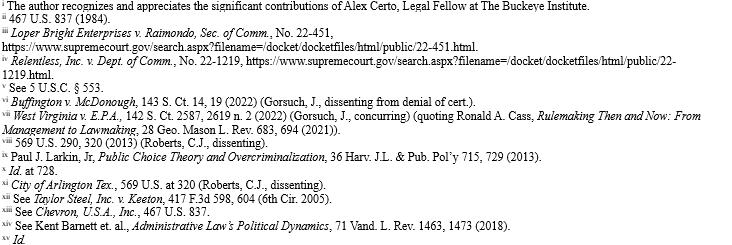
Columbus Bar Lawyers Quarterly | Spring 2024 60 |



Columbus Bar Lawyers Quarterly | Spring 2024 61 |



THECHEVRONDOCTRINE: ITS RISE AND FALL, AND THE FUTURE OF THE ADMINISTRATIVESTATE
By Janyce Katz
Loper Bright Enterprises v. Raimondo and Relentless v. Department of Commerce are two recently heard US Supreme Court cases involving herring and the right to have an inspector on each boat checking for overfishing (a 1976 law) but having the fishing company pay for a government inspector to observe the fishing ($700 a day, a 2000 rule). Thesecasesarechallengingthe Chevron doctrine[i]. Thefish,theinspector andthejusticeshearingthecasemaylimitoroverrule Chevron.
Many of us understand the Chevron doctrine to be analogous to the “rational basis” deference the courts have adopted with respect to review ofactualstatutes,butnowappliedtoadministrativeprocedures.
However, even before the Supreme Court took these two cases, others of us questioned whether the Chevron doctrine’s delegation of statutory interpretationandrulesexceedtheConstitutionalpoweroftheExecutive branchofthegovernment.
Columbus Bar Lawyers Quarterly | Spring 2024 63 | REVIEWOFTHOMASW.MERRILL’S
Central to the Loper Bright cases is the question: Is it the Legislature that is to write the laws and the Courts’ duty to interpret them? Further,dothecourtshavethesolepowertointerpretlaws?
Someevenarguethatthemereexistenceofadministrativeagenciesis beyond the scope of what the Founding Fathers set forth in the US Constitution as they only named specific duties but didn’t specifically authorizeadministrativeagencies.
It should be understood that the Ohio Supreme Court recently held that the Chevron deference to agency interpretation of a rule or statuteisnotforOhio[ii].
The Chevron Doctrine: ITS RISE and FALL, and the FUTURE of the ADMINISTRATIVE STATE[iii], a book brilliantly written by Thomas W. Merrill,CharlesEvansHughesProfessorofLawatColumbiaUniversity, describesindetailthepre-Chevron administrativelawcasehistory,the Chevron case, and how it morphed into a doctrine and its benefits as well as its flaws. At the end of his book, Merrill suggests what he believeswouldbeabetter Chevron
This book, by itself, with its detailed footnotes would be an excellent read for anyone interested in federal administrative law. As an aside, were I teaching general Administrative Law or heading a legal team specializing in administrative law I would mandate reading this book along with a few others to help people better understand the role of law and administrative agencies and the arguments about their existenceandpowers.[iv]
Columbus Bar Lawyers Quarterly | Spring 2024 64 |
Merrill suggests that there are four values needed to form a compositepictureofwhathecalls“aregimeofjudicialreviewof agency interpretations might look like:” Rule of Law values; Constitutional values; Accountability values and Better Agency Decisionsvalues.Constitutionalvaluesarekey,and“itisuptothe courts to determine whether the boundaries that limit the authority of an agency have been observed.” The values are “derived from individual rights, federalism, and separation of powers values reflected in the Constitution.” If the agency is acting within its delegated authority, then the court should accept, as discretionary interpretive choice, the agency interpretation of the statute. Rule of Law values also must be incorporatedintowhetheranagencyisactingwithinthescopeof itsdelegatedauthorityand,ifso,whetheritcompliedwithgood process.“Iftheagencyshowsitsactionisconsistentwithsettled authority,thisshouldbegivenweight.Thesameshouldbeused to determine whether the agency ‘has complied with a process that allows for public participation and gives reasons for its interpretive choice. ’If it hasn’t followed that process, the court shouldgiveweightifitisconsistentwithsettledexpectationsand reducedweight”ifitisnot[v].
Columbus Bar Lawyers Quarterly | Spring 2024 65 |
Before Chevron¸ there were administrative agencies. Over the years, agencies became more important and more essential to thefunctioningofthecountry[vi].
Inthe1930’s,FranklinDRooseveltexpandedthegovernmentand increasedthenumberofagencies,addingatleast69agenciesto those already existing. His New Deal program along with other agencies,liketheTennesseeValleyAuthorityActcreatingtheTVA and enabling the federal government to build dams along the Tennessee River, were attempts to soften the pain of the Great Depression, find jobs for people and prevent a socialist/communist type rebellion in the US. Roosevelt and others believed that individuals with technical expertise in a particularfieldwouldbebetteratcraftingaruleorinterpretinga lawthanwouldacourt. Conservativesthoughtthisexpansionof theadministrativestatewasaconstitutionaloutrage[vii].
To ensure that courts as well as lawmakers knew which rules existed and which had been removed, Congress enacted the Federal Register Act (FRA) in July of 1935. The FRA created the Federal Register as the official daily publication for presidential documents, executive agency rules and notice documents and established a central location for filing documents for public inspection. Within a decade the government issued the Administrative Procedure Act, which established a uniform process for publishing, obtaining comments on, and finalizingregulations.
Asaresultoftheconsumer,healthandsafety,andenvironmental movementsinthe1960'sandearly1970's,thefederalgovernment expanded again. The Occupational Safety and Health Administration was created in 1971 and the Consumer Product Safety Commission in 1973. The Environmental Protection Agencywasaconsolidationofseveralotheragencies.
Columbus Bar Lawyers Quarterly | Spring 2024 66 |
Andtheseagenciesissueregulations. AccordingtotheOfficeof the Federal Register, the number of final rules published each yearisgenerallyintherangeof3,000-4,500. Whilesomeofthose rules may have substantial economic, legal, or policy effects, many of them are routine in nature and impose minimal regulatoryburden,ifany.[viii].
"Excessive" regulation began being blamed for everything from raising interest rates to forcing small business into bankruptcy and making U.S. businesses uncompetitiveinworldmarkets.
Theregulatoryprocessitselfcameundersharpattack.
Complaints became commonplace about "interference in the marketplace," "red tape," "big government," and "faceless, nameless bureaucrats."
Thesheervolumeoffederalrulesandregulationswith their complexity, costs, and delays were leading to publicandbusiness-sectorfrustrationandimpatience withthefederalgovernment[ix].
Merrillarguesthatbefore Chevron,courtsapplied“amixedbagof factors”toaccessthesignificanceofanagency’sinterpretationof a statute establishing its authority[x]. In early years, they gave weight to the interpretations contemporary with the enactment of the statute or had been maintained consistently for a period oftime[xi].
Columbus Bar Lawyers Quarterly | Spring 2024 67 |
He points out key cases like National Labor Relations Board v. Hearst Publications where the newspapers refused to bargain withnewsboysbecausetheyconsideredthemtobeindependent contractors[xii] and Skidmore v. Swift & Co[xiii]. In Hearst the Court rejected the use of the common meaning of the word “employee” and deferred to the agency created by Congress, which found the boys were “employees.” Skidmore involved firefighters and a definition of “working time” for purposes of beingpaidtimeandahalfforovertime. JusticeJacksondecided that the Labor Department, charged with the authority to investigate practices regarding overtime pay, would be a better interpretandapplytheFairLaborStandardsActtothesituation; thecasewassentbacktothelowercourttoreconsidertheissue inlightoftheDepartment’sanalysisofthebulletinelaboratedin thegovernment’sbrief.
The Chevron U.S.A., Inc. v. NRDC, 467 U.S. 837 (1984) decision developed into a two-part test deferential to government agencies. In the process, the doctrine was simplified. Chevron statedthatastatuteisunambiguousonlyifCongresshasdirectly spoken to the precise question at issue[xiv]. If a statute is ambiguous, Chevron requiresthereviewingcourttoapproveany reasonableorpermissibleconstructionofthestatute[xv].
Columbus Bar Lawyers Quarterly | Spring 2024 68 |
The question raised in the Chevron case in part focused on the meaning of "stationary source" under a revised version of the Clean Air Act. The EPA administrator issuing that regulation was Anne Gorsuch. The case involved a Reagan administration Environmental Protection Agency interpretation of the Clean Air Act allowing corporations to consider all chimneys as if under a bubblewithatotalofallpollutionfromallchimneysmeetingthe clean air standard rather than each individual chimney meeting thecleanairstandards.JusticeStevensmulledoverthecaseand came out with a decision that morphed into a major part of administrativelaw.
Merrill argues that the Chevron decision as a whole meets the four criteria that he believes are essential. However, he thought part II, which Justice Jackson inserted as a preamble to the opinion, was not intended to become a major doctrine. This preamblebecamethefoundationofthe ChevronDoctrine.
Initially, Chevron was regarded as normal precedent. Merrill pointstoapivotal1984caseintheDCCourtofAppeals, General Motors Corp. v. Ruckelshaus, that helped turn Chevron into a doctrine[xvi]. While the three panel judges found for General Motors, the en banc court upheld the EPA’s interpretation. Chevron has become the most-cited administrative law case of alltime[xvii].
In 1989, Justice Antonin Scalia, a teacher of Administrative Law before becoming first a judge and then a justice, called it a significant decision, “perhaps the most important in the field of administrativelawsince VermontYankeeNuclearPowerCorp.v. NRDC”[xviii].[xix] He based his argument on past pre-Chevron casesandwhathecalledhallmarkofthemodernadministrative state — the broad delegation to the Executive branch, and the agencies which, perhaps, have the expertise to better create as wellasinterpretrulesandclarifylaws.
Columbus Bar Lawyers Quarterly | Spring 2024 69 |
When Scalia came to the Supreme Court, he championed the Chevron Doctrine, but then, things changed. Democrats controlled Congress and the executive agencies and Conservatives,includingjustices,movedawayfromdeferenceto agencies. Suddenly,Conservativesfoundthatperhapstheuseof Chevron wasdangerouslyexpandingexecutivepower.
Othershavearguedthatagenciesmaydirectlyorindirectlyhave thepowertowriterules,interpretthemandthenapplytherules toaspecificsetoffactsinorderprovideapreliminaryjudgement on an issue that arose based upon the rules. The argument is thatthecomplexityofmanytwenty-firstcenturyissues,plusthe knowledge and the expertise on precise topics an agency has, necessitates the writing of rules interpreting laws and applying the rules to possible violators. In addition, Congress currently seems to be experiencing excruciating problems that have limited votes on almost every topic — including major, keep the government going, financial legislation. Given these problems, how could Congress ever interpret and write very precise rules, especially given the number of agencies and the complexity of manyoftheirissues? Courtsalsoareoverwhelmedandmaynot havesufficientresourcesand/orknowledgetocorrectlyinterpret the intricacy of a complex administrative issue. Therefore, allowing administrative agencies to interpret laws and apply them to facts should be considered powers central to modern administrativelaw[xx].
Columbus Bar Lawyers Quarterly | Spring 2024 70 |
In part, Loper Bright Enterprises v. Raimondo and Relentless v. Department of Commerce are another version of the fight between the three branches. A “who gets to interpret the wording of a statute” – courts or administrative agencies-and in parthowmuchpowershouldadministrativeagencieshave.
Merrill filed a brief in the Loper Bright case in support of maintaining Chevron butmodifyingitasfollows:
Step one: Has Congress answered the question that theagencyhasaddressed?
Step two: If not, is the agency interpretation reasonable, in the broad sense of taking account of expectations created by prior agency practice, and solicitingtheviewsofpersonsaffectedbytheagency interpretation?[xxi].
Perhaps, the Court would go even further, finding that the US Constitution and its Founding Fathers included in the US Constitution no power to create administrative agencies. Or perhapsfortyyearsofcaselawbasedon Chevron andconsidered settled law will be respected rather than overturned. The latter along with his suggested modifications would be what I believe ThomasW.Merrillwouldwant.

Janyce Katz
General Innovations and Goods, Inc.
janyce.c.katz@gmail.com
Columbus Bar Lawyers Quarterly | Spring 2024 71 |


Columbus Bar Lawyers Quarterly | Spring 2024 72 |
COLUMBUS BAR ASSOCIATION
LEGAL RESOURCE GUIDE
Central Ohio’s Legal Professional Resource
A printable index of central Ohio mediators, expert witnesses, attorney support services, local court rules, and court and government information.






CHEVRON DEFERENCE AND ITS UNCERTAIN FUTURE IN STATE AND FEDERAL COURTS
By Aaron Johnston and Christopher Bagi

Two U.S. Supreme Court cases[1] have reignited interest in the topic of judicial deference to interpretations made by administrative agencies. While the focus of the politicos, academics, and casual bloggers is squarelyon Chevron,this article will briefly revisit thepanoplyofdeference doctrines that have developedinthelastfour decadeswithaparticular focus on deference doctrinesinOhio.
The proponents of deference generally, and Chevron specifically, seem to focus ontheagency’ssubjectmatterexpertise, judicial economy, judicial restraint, and the implicit intent of the legislature to delegatecertaininterpretivefunctionsto the executive branch. The opponents of thesametypicallyfocusonaviolationof theseparationofpowers;theexpertiseof thejudiciarytointerpretlawsorrules;and acommonlyheldbeliefthatagenciesact incalculatedwaystoamassmorepower, while the legislature shirks its responsibility to draft laws in a meaningful and comprehensive manner.
While many of these arguments have merit,acasualarticlelikethisisnoplace to attempt to resolve such a nuanced topic. Instead, this article will provide a briefoverviewofthecurrentstateofthe law and a thought or two on its future. And then, once armed with this knowledge, you might be better positionedtoreachaninformeddecision astowhichofthepartiesin Loper Bright and Relentless you want to align. To be fair, it’s only the academic and philosophical aspects of the debate that you must pick a side (we all want the Atlanticfishermantobeatthefeds).
Columbus Bar Lawyers Quarterly | Spring 2024 75 |
The evolution of deference at the U.S. Supreme Court.
When and under what circumstances a court may, or must, give deference to an administrative agency’s interpretation of federal lawhasbeenanevolving area of U.S. Supreme Court jurisprudence fordecades.
Before we discuss the core cases of modern deference, some background is helpful. Starting as far back as 1803, and a staple of law school constitutional law classes, is the seminal case on deference: Marbury vs. Madison.[2] Rarely classified as a deference doctrine, but rather, a means of selfpreservation, or the true genesisofjudicialreview, Marbury took the first position on what deferenceshouldbe
giventoanagency’sinterpretationofthe law: none. The Court held that the judiciary alone is charged with the interpretation of the law. Following Marbury, the high Court has taken us along a continuum of permissive deference. From the judiciary being the sole interpreter of the law, to the administrative agency’s contemporaneousconstructiondemands “very great respect,”[3] to interpretations of agencies should carry a strong presumption of correctness and should only be interfered with if the agency acted in error,[4] and then a broad limitation, that agency interpretations should be viewed only as a source of guidance[5] under the rightcircumstances.
That brings us to 1984 when Chevron[6] rocks the deference landscape. Chevron deferencerequiresareviewingcourtfirst todeterminewhetherthestatutewithin anagency’spurviewisinfactambiguous. If so, then the court must determine whether the agency’s interpretation was reasonable. If the answer to both questions is in the affirmative, then deference to the agency action ismandatory.
BrandX[7]deferencethentakes
Chevron onestepfurther. BrandX holdsthatan
Columbus Bar Lawyers Quarterly | Spring 2024 76 |
agency may reinterpret an ambiguous statute, even when the proposed interpretation conflicts with a prior judicial interpretation of the statute. In other words, prior judicial precedent does not trump where Chevron deference wouldotherwiseapply. Meanwhile, as the Supreme Court continued to refine its deference doctrine, the Courtin Auer[8]provided for mandatory deference inthe interpretation of ambiguous administrative regulations.Therationale is that the agency, having drafted the regulations at issue, has expertise in interpreting itsownregulations.
Finally, in 2000, flexibility arrivedintheformofthe Skidmore doctrine.[9]
Skidmore deference is applied to agency actionsand
interpretations but does not require a finding of ambiguity before deference may be afforded to the agency’s action. Rather, the agency’s expertise, consistency in application, and persuasiveness in the interpretation are all considered. Skidmore deference may also be applied in instances where the statuteorregulationatthecenterofthe legal dispute is less precisely within the agency’s purview, for example interpretation of a procedural statute of general application to numerous agencies as opposed to a statute over which the agency has exclusive jurisdiction. Several other cases dot the timeline, some significant (like King v. Burwell,[10]thedevelopmentofthemajor questions doctrine) and others mere refinements (like United States v. Mead Corp.,[11] the amount of deference given basedupontheformalityandconsistency intheagency’sprocedures).
Agency deference under
Ohio law. While Loper Bright and Relentless have the potential to upend deference doctrinesinfederalpractice,whatmaybe even more significant to administrative lawattorneysinOhioaretworecent
Columbus Bar Lawyers Quarterly | Spring 2024 77 |
decisions addressing Ohio’s own deference doctrine (or, more precisely, the absence of suchadoctrine).
The Ohio Supreme Court in TWISM Enterprises v. State Board dispatched Chevron-style deference in relative obscurity. The dearth of headlines may have been the result of multiple factors. First, a section of the Ohio Revised Code[12] already favored a Skidmore-like permissive-deference approach. Second, there was no bedrock case or clear doctrine to reverse. [13] And finally, and probably the most farfetched reason, changes to administrative law doctrines might not be that interesting to mainstream mediaconsumers.
While TWISM dealt with interpretation of a statute rather than an administrativerule,the
toneofthedecisioncastseriousdoubtas to whether a mandatory-deference rule akin to Auer deference might still be viable in Ohio. Seeking to remove uncertainty, the Court in In re Alamo Solar I flatly rejected the use of mandatory-deferencedoctrineslike Auer.
The concurrence, however, noted that Alamo Solar was a dispute over an agency’s findings of fact, not a dispute over a purported ambiguity in the agency’s rules. As such, any attempt to reject application of a mandatorydeference doctrine such as Auer deference, was not properly before the Court. Although it appears a majority of the Ohio Supreme Court is prepared to, andarguablydid,rejectapplicationofan Auer-styledoctrineinOhio,anargument canbemadethatthispronouncementin Alamo Solar was, at most, dicta and should not preclude arguing in favor of Auer in Ohio (nonetheless, be sure to include the “but see” citation to AlamoSolar). The future of deference.
Predictions — especially those made in print—canbedangerousandhaveaway of coming back to haunt the prognosticator.Thatsaid,goingwiththe housefavoriteandhavingcoverprovided byfarmoreaccomplishedattorneys,
Columbus Bar Lawyers Quarterly | Spring 2024 78 |
scholars, and Sunday bloggers:
Chevron likely fails to celebrate its fortieth birthday. Skidmore is theheirapparent.The king is dead . . . long livetheking.
In Ohio, the dicta in Alamo Solar stays dicta onlyforaslong as it takes to get the right case to Front Street.
Aside from lower courtsbeingrequired todigdeeperintothe canons of construction, we will see virtually no change in the way legislative, executive, or judicial bodies go abouttheirbusiness.
The decisions from the U.S. Supreme Courtinapost-Chevronworldstrongly resemblethosehandledinthelastfive yearswhencitationstoChevronwere alreadyanullity.
Bottom line: Not much changes for the practitioner. You still want to persuade theagency.Itsopinionstillmatters.Buta failuretodosomaynotbeasfataltoyour caseasitusedtobe.

Aaron Johnston Division Counsel, Division of Industrial Compliance, Ohio Department of Commerce.
Aaron.Johnston@com.ohio.gov

Christopher Bagi Assistant Division Counsel, Division of Industrial Compliance, Ohio Department of Commerce.
Christopher.Bagi@com.ohio.gov

Columbus Bar Lawyers Quarterly | Spring 2024 79 |


PROTECT your practice. You've worked hard to build your law practice. Protect it with Professional Liability Insurance, available through the Columbus Bar Association.Coverageavailableforsoloattorneystolargefirms. Coverage attorneys trust. CBS Agency, Inc. offers lawyer professional liabilitycoveragefromthreeofthemosttrusted and experienced insurance carriers in the industry — Medmarc, CNA and OBLIC — all of whichareratedA(Excellent)byA.M.Best. INQUIRE: (614) 340- 2076 or LPL@cbalaw.org Contact us today to compare rates and options.

THE EVOLUTION OF ADMINISTRATIVE
HEARINGS IN OHIO
By Melinda Ryans Snyder
Over roughly the last ten years, administrative hearings have become increasingly complex, with procedural requirementsoftenmakingthemmore akin to criminal trials than the quasijudicialadjudicationstheyareintended to be. It is no longer unheard of for a board to receive upwards of 40 subpoenas duces tecum demanding the production of documents to be deliveredweeksinadvanceofahearing.
Someboardshaveevenstartedholding virtualpre-hearingconferences–witha court reporter present – to hear discoverydisputes.
Despitethisgrowingtrend,thereisno constitutional right to discovery in administrativehearings.[1]Discoveryisa creature of statute, and Ohio’s Administrative Procedure Act (APA) intentionallydoesnotprovideforit.
Columbus Bar Lawyers Quarterly | Spring 2024 81 |
Discoveryinherentlyrequiresmoretime and leads to prehearing disputes like those that bog down the civil court system. The federal APA, and Ohio’s resulting APA, were created based on the belief that rigid legal procedures slow government action and are unnecessary for technical subjects regulatedbylicensingentities.Butthe more time that passes since the creation of the Administrative Procedure Act, the more the original purposeoftheActandthereasonsfor not applying the strict rules governing thecourtsarebeinglost.
ThefederalAPAevolvedoutoftheNew Deal, which was a series of reform programs, public work projects, financial reforms, and regulations enacted by President Franklin D. Rooseveltbetween1933and1938.Itwas controversialfromthestart.Businesses were against it, arguing that biased agency officials would exercise lawless discretion against business interests and ravage businesses’ freedom and profits.[2]Asearlyas1933,acommittee of the American Bar Association proposed the creation of a special administrative court.[3] In 1938, due to criticism of federal administrative agencies,PresidentRooseveltaskedthe Attorney General to appoint a committeetoperformafullinquiryinto theadministrativeprocess.[4]
In 1941, the Attorney General’s CommitteeonAdministrative
Procedure issued a report that examined the common-law rules of evidencewithrespecttoadministrative agencies.[5] The report found that requiring those rules to apply to agencies would be “inconsistent with theobjectivesofdispatch,elasticity,and simplicity which the administrative processisdesignedtopromote.”[6]The reportemphasizedthatthecontrolling factor in determining admissibility at theagencylevelistherelevancyofthe evidence.The“absenceofajuryandthe [inclusion of] technical subject-matter with which agencies often deal” were distinguishing features of an administrativeproceeding.[7]
President Truman signed the federal APAintolawonJune11,1946.[8]Inthe forwardtotheLegislativeIntentofthe APA, Senator Pat McCarren, Chairman of the Committee on the Judiciary, wrote, “Because of its nature and consequence,andbecauseithasbeen through a most rigorous and lengthy sieveofconsiderationbytheCongress, the legislative documents which accompanyandexplainitspurposeand operation are of immediate and permanent importance.”[9] Senator McCarran described the Act as “a comprehensivecharterofprivateliberty and a solemn undertaking of official fairness.Itisintendedasaguidetohim who seeks fair play and equal rights underlaw,aswellastothoseinvested withexecutiveauthority.Itupholdslaw andyetlightenstheburdenofthoseon
Columbus Bar Lawyers Quarterly | Spring 2024 82 |
whomthelawmayimpinge.”[10]
Senator McCarran also noted that “informalproceduresconstitutethevast bulkofadministrativeadjudicationand are truly the lifeblood of the administrativeprocess.”[11]Discussionof thepurposeforthevarioustermsinthe original APA specifically noted, “[n]o attempt is made to require the application of the so-called ‘common law’ or ‘jury trial’ rules of evidence in administrative hearings.”[12] Rather, “’[t]he absence of a jury and the technical subject matter with which agencies often deal, all weigh heavily against a requirement that administrativeagenciesobservewhatis known as the “common law rules” of evidenceforjurytrials.’”[13]
In 1948, Ohio joined 12 other states in adopting a version of the 1946 Model State Administrative Procedure Act (MSAPA).[14]In1961,theRevisedModel State Administrative Procedure Act, which was adopted by 27 states, updatedthe1946MSAPA.Ohiowasnot oneofthosestates.[15]
Consistent with the intent of the OhioAPA,underOhiolaw,therulesof civilprocedure(includingdiscovery)do notapplytoadministrativeproceedings. [16] Ohio courts have long held that administrative hearings “need not be elaborate. Something less than a full evidentiary hearing is generally sufficient in an administrativeaction.”[17] Norare
administrative agencies generally bound by the strict rules of evidence appliedincourt.[18]TheSupremeCourt ofOhioandtheTenthDistrictCourtof Appealshaverepeatedlyheldthateven evidence that might constitute inadmissible hearsay when stringent rulesofevidencearefollowedmustbe considered in proceedings where relaxedrulesofevidenceareapplied.[19] Thus hearsay is admissible in administrative hearings and can constitute reliable, probative, and substantialevidence.[20]
The Supreme Court of Ohio has also directlyacknowledgedthatanagencyis not required to allow prehearing discovery.[21] “[An administrative board meets] its duty as to ‘discovery’ by supplying [a licensee] with sufficient information enabling him to properly respondtothecharges.”[22]
Administrative agencies are given the authoritytocontrolhearings,“subjectto a duty to maintain fairness and impartiality.”[23] In larger, more complicatedcases,itcanbeappropriate to exchange a list of witnesses and exhibits prior to the hearing.[24]
Practicallyspeaking,showinguponthe day of the hearing with records for 10 patientsandexpectingthepartiestobe able to discuss them would be an impossibility.Butthechoiceswemake as administrative law attorneys have a ripple effect throughout the body of administrativelaw.
Columbus Bar Lawyers Quarterly | Spring 2024 83 |
Thetrendofallowingmoredetaileddiscoveryandapplyingtherulesofevidenceand proceduremorestrictlyriskssacrificingthebenefitsthatmakeadministrativehearings adesirablealternativetojudiciallitigationinthefirstplace.Greaterdiscoveryincreases thecostsforallparties,slowstheadjudicationprocess,andgenerates morehostility amongcounsel.ItcontravenestheintentoftheAPAandpoorlyservestheinterestsof all affected parties. Administrative lawyers must ask ourselves whether this is the directionwereallywantthepracticeofadministrativelawtogo.




Columbus Bar Lawyers Quarterly | Spring 2024 84 |
Melinda Ryans Snyder State Medical Board of Ohio melinda.snyder@med.ohio.gov
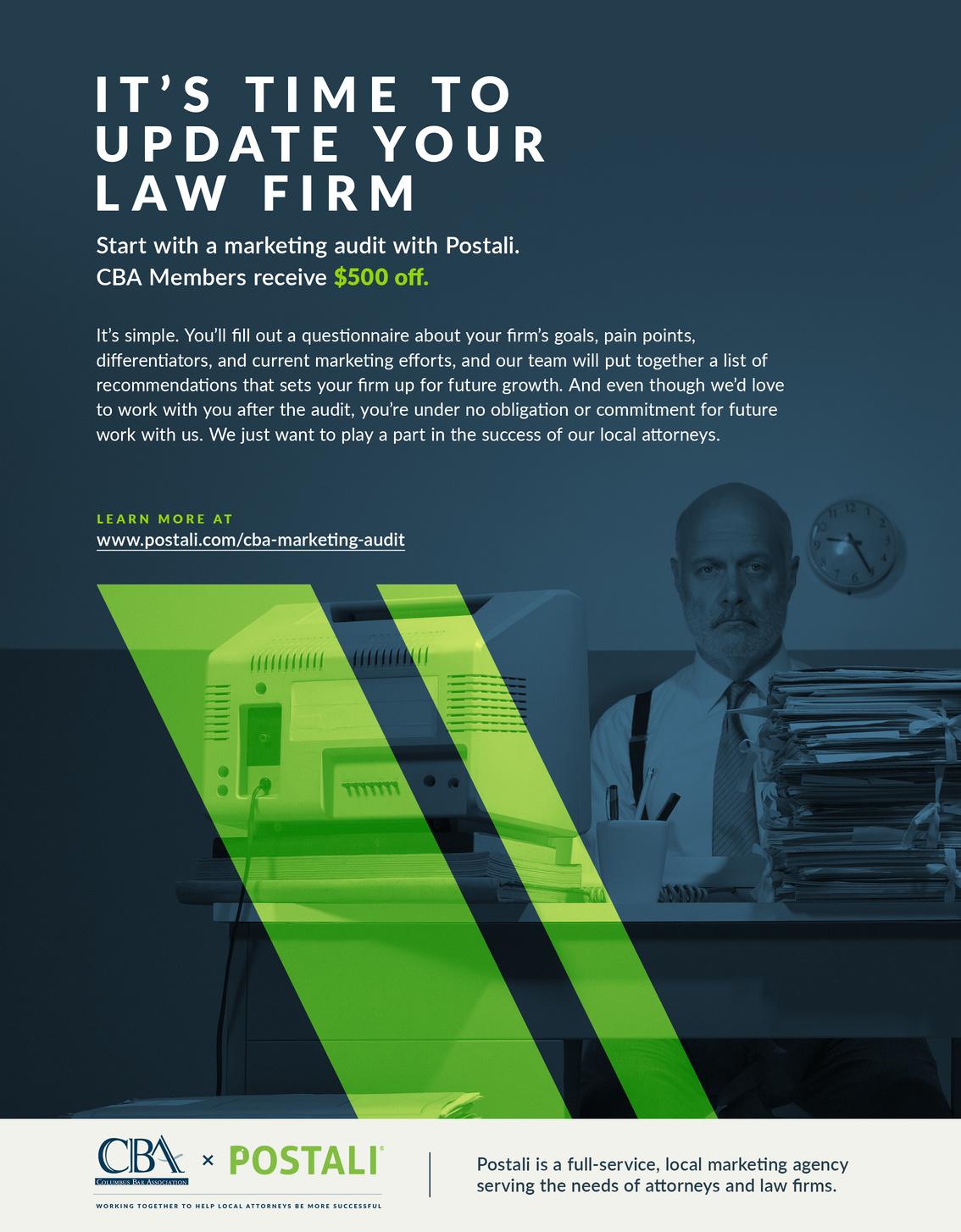


ELECTRONIC
SIGNATURE PROTOCOL for notaries & design professionals
By Luther L. Liggett, Jr.

As technology races onward to achieve previously unimaginable computerized applications,professionalpractice laws remain conservative to ensure the highest level of professionalism and protectiontothepublic.
Ohio law requires authenticating Notary Sealsandtheprofessional Seals of Architects, Landscape Architects, and Professional Engineersonprofessional workproduct.
Before the age of computers, traditional practiceandlawrequired live or “wet” signatures and seals, usually with a three-dimensional embossing of paper or coloredinktoidentifyan
original document. But paperisatoolofthepast, and today’s professionals develop electronic documentsoncomputers for ease of correction andtransmittal.
Ohio law accommodates electronic seals, provided that the professional follows several different setsofrulespromulgated for different purposes. This article will review thoseprovisionsoflaw.
Electronic Notarization
Effective September 20, 2019, the Notary Public Modernization Act took effect to allow for electronic notarization, Sub.SenateBill263,132nd GA.TheOhioSecretaryof
State took control of the commissioning process for notary applicants, providing statewide uniformity, R.C. 147.01 et seq.Now,evenattorneys arerequiredtocomplete an education program. The Columbus Bar Association serves as an authorizededucationand testingprovider.


Attorneys who are commissionedasnotaries may execute in-person electronic notarizations. However, attorneys must takeatesttobelicensed to serve as an online notarypublic.
R.C. 147.551 added the formofjurattobeused in any notarization, particularlyincludingthe name of the affiant: “Sworn to or affirmed and subscribed before me by (name of signer) this date of (date).” The SecretaryofStateadded an electronic statement, O.A.C. 111:6-1-04:
(A) “This certificate pertains to an electronic notarial act performed withtheprincipal(s)inmy physicalpresence”;or
(B) “This certificate pertains to an electronic notarial act performed with the principal(s) appearing online using audio-video communication.”
The Notary must use electronic credential analysis and identity proofing, R.C. 147.64; O.A.C. 111:6-1-05. The software must ensure that the notarial act is tamper-evident,
R.C.147.66(D).
The legislature currently is considering House Bill 305 to provide for electronic filing of pleadings in additional Ohio courts. The bill passed the House by a unanimous vote and is currently pending in theSenate.
Blueprint “Plan Stamping”
Ohio’s Construction Seal law requires a professional seal to authenticate plans and specifications as a condition precedent to issuingabuildingpermit, R.C. 3791.04(A). The need for a professional seal depends on whether preparing the plans requires expert skill and knowledge acquired by professional or technical training in architecture orengineering.
The ultimate responsibility to protect the use of a design professional’ssealisupon theindividualarchitector engineer. No law can preventatrulydishonest personfromabusingthe rules.Whileelectronic
seals are an option, the traditional wet signature orcoloredinksealisstill authorized and may be more appropriate given certain circumstances thatonlytheprofessional mightknow.
BoththeOhioArchitects Board and the Ohio Board of Registration for Professional Engineers and Surveyors regularly cite unlicensed individuals for “plan stamping” — the sealing ofdesigndocumentsnot preparedunderthedirect supervision and control of the licensed designprofessional.
Illegalplanstampingmay arisewhenacontractorin a design-build relationshiptakescontrol of blueprint drafting, whether for valueengineering or for convenience. Plan stamping also occurs in apparently innocuous situations,suchas when a chain-brand owner transmits its standard drawing from out-ofstate to an Ohio licensed professional, who simply seals the drawing for building permitsubmission.
Columbus Bar Lawyers Quarterly | Spring 2024 88 |
With computergenerated seals, the risk of plan stamping increasesbecauseanonlicensedpersonmaycopy the seal from an electronic format onto other documents. Thus, even when a third party will accept electronic plans in form, it remains the licensed design professional’sdutytotake precautions through encryptionprotocols.This may mean using an original wet seal and signature even when electronic means are available, thus not facilitating illegal activity when participating in a laxprocess.
OnemustreadthisSeal
Law in concert with the professional-licensure laws, which require engineering or surveying work products to “be stamped with the seal andbesignedanddated bytheregistrantorbeara computer-generated seal and electronic signature and date,” R.C. 4733.14, Engineers and Surveyors. See also R.C. 4703.12, Architects; R.C. 4703.36, LandscapeArchitects.
Thesignificanceoftheact of sealing professional work product is a certification,i.e.,“By
affixing their seal to any document, the registrant certifies to the accuracy andcompletenessofthe information contained in the sealed document, and by such action, assumes full responsibility thereof.” O.A.C. 4733-23-01(C), Engineers. This law implies liability for the design professional. If that seal is reused improperly, innocent parties may rely on the seal with inappropriate exposure to the designprofessional.
Importantly,thelicensure laws also define the violation. “An architect shall not sign or seal drawings, specifications, reports, or other professional work for whichheorshedoesnot have direct professional knowledge and direct supervisory control,” O.A.C. 4703-3-07(E)(1), Architects.SeealsoO.A.C. 4703:1-3-04(E)(1), Landscape Architects; O.A.C. 4733-35-07(A), EngineersandSurveyors.
How does a design professionalaffixan Electronic Signatures
“electronic signature” to complywiththeselaws?
The Architects Board promulgated a rule for electronic signatures, which requires that the seal “is linked to the document in such a mannerthatchangesare readily determined and visually displayed if any data contained in the document file was changed subsequent to the electronic seal and signature having been affixedtothedocument,” O.A.C. 4703-3-01(D)(4), Architects.SeealsoO.A.C. 4703:1-3-01, Landscape Architects;O.A.C.4733-2301(D), Engineers andSurveyors.
These requirements cannotbemetbymerely scanning in a document electronically. Even if an ownerorpublicauthority mightacceptascan,the licensure Boards prohibitit.
State Agencies
The State’s Office of Information Technology promulgated a comprehensiveruleforall state agencies as an electronic signature protocol.Thatrule
Columbus Bar Lawyers Quarterly | Spring 2024 89 |
requires “documented policies and procedures that provide reasonable assurance of the authenticity of electronic signatures,” O.A.C. 123:3-1-01(H).
By example, the Ohio Facilities Construction Commission (OFCC) solicits construction bids electronically for state agency construction projectsthroughthe
State’s Enterprise Electronic Bidding Module for Construction,
O.A.C.153:1-8-01(A).Aspart of that rule, the State “shall establish a process for interested bidders to electronically certify their identityandthevalidityof their submitted bid.” O.A.C. 153:1-8-01(K). OFCC has used encrypted bid documents for manyyears.
Conclusion
Electronic seal and signature protocols are the future of legal documents and design plans and specifications. As required by the laws andrules,itisuptoeach professional to ensure that the seal and signature are encrypted to prevent the unauthorized use byothers.
 Luther L. Liggett, Jr. Attorney at Law lliggett@columbus.rr.com
Luther L. Liggett, Jr. Attorney at Law lliggett@columbus.rr.com
Columbus Bar Lawyers Quarterly | Spring 2024 90 |
COLUMBUS
Eimear Bahnson
David Bloomfield Jr.
Sally Bloomfield
Thomas Bonasera
Sandra Booth
William Browning
Stephen Buchenroth
Bruce Burkholder
Joel Campbell
Lindsay Cardwell
Christina Corl
Mark Defossez
Darby Dooley
Jordan Edmonds
Robert Erney
John Fergus II
Justin Fox
Ronald Fresco
Bradley Frick
Carl Fry
Charles Fultz
Preston Garvin
Christopher Gassett
Christopher Geer
Peter Gibson
Paul Giorgianni
Dr. Gregory Gudin
Daniel Gurtner
Peggy Guzzo
Courtney Hanna
Gerald Hinkle II
Cynthia Hvizdos
Richard Igo
Frederick Isaac
Vicki Jenkins
John Jones
Michael Jordan
John Joseph
Rebecca Kells
Robert Kerpsack
Allen Kinzer
Kenneth Kline
David Kramer
Donald Leach Jr.
Scott Lindsey
Thomas Lindsey
Steven Loewengart
Michael Martz
Timothy McGrath
Pamela McVeigh
Walter Messenger
Bonnie Michael
Alyson Miller
Denise Mirman
Briana Morris
Scott Mote
Stephen Moyer
Joseph Nigh
Aren Olson
Samuel Peppers III
Rosemary Pomeroy
William Porter II
Frank Ray
Susan Rector
Allison Roberts
Ronald Rowland
Philip Ryser
James Saad
Charles Schneider
Gus Shihab
Kimberly Shumate
William Scott Simon
Carl Smallwood
Michael Squillace
J. Douglas Stewart
Christine Strehl
Robin Strohm
Roger Sugarman
Ira Sully
Thomas Taggart
Aracely Tagliaventi
J. Troy Terakedis
Myron Terlecky
David Thomas
Christopher Vonau
William Wahoff
Brianna Walsh
Charles Warner
Geoffrey Webster
James Weiler


THANK YOU Yoursupportmakes
difference.
BAR ASSOCIATION SUSTAINING MEMBERS
a

Letters to the Editor Haveanyfeedbackorwanttoshareyour own perspective on one of the articles? Send a letter to the editor at publications@cbalaw.org and your feedback might be featured in our next issue!Wecan'twaittohearfromyou. Columbus Bar Association 230 West St., Suite 100 Columbus, OH 43215 (614) 221-4112 www.cbalaw.org Lawyers Quarterly For advertising opportunities in the Columbus Bar Lawyers Quarterly and other Columbus Bar Publications, contact Leslie Klenk at Burgie MediaFusion: (614) 554-6294 or leslie@burgiemediafusion.com























































































































 Luther L. Liggett, Jr. Attorney at Law lliggett@columbus.rr.com
Luther L. Liggett, Jr. Attorney at Law lliggett@columbus.rr.com


